Disclosure: This article contains affiliate links. We may earn a commission from purchases at no extra cost to you, which helps our travel content.
When most travelers hit Mexico City, they make a beeline for Zócalo, Frida's house, and Chapultepec Park. Don't get me wrong—these spots are iconic for a reason. But after five visits to CDMX (including a three-week sourcing trip for our fall collection), I've discovered the city's true character lies in its less-trafficked colonias. These neighborhoods pulse with an authenticity that no guidebook can capture—where abuelitas sell hand-pressed tortillas from doorways, design studios operate from converted Art Deco mansions, and some of the city's most innovative retail concepts are redefining Mexican fashion. This fall, I carved out two weeks to explore these hidden pockets, connecting with local designers and experiencing the city as if I lived there. Ready to ditch the tourist trail and experience Mexico City like a true chilango? Let's dive into ten neighborhoods that even your most well-traveled friends haven't explored.
Santa María la Ribera: The Intellectual's Haven
If there's one neighborhood that captures Mexico City's architectural evolution, it's Santa María la Ribera. Once the stomping grounds of 19th-century intellectuals, this colonia now blends historic mansions with contemporary creative energy in a way that feels completely unmanufactured.
My obsession started at the Moorish-style Kiosco Morisco, a stunning iron pavilion originally built for the 1884 World's Fair in New Orleans. I spent an entire afternoon sketching its intricate latticework while watching local families gather for impromptu dance sessions. The neighborhood's crown jewel, however, is the Museo de Geología—housed in a stunning Art Nouveau building where the mineral specimens are almost secondary to the architectural details.
What makes Santa María special is how it's evolving without surrendering to full-blown gentrification. For every hip natural wine bar (Ancestral is my recommendation), there's a decades-old pulquería serving the fermented agave drink to regulars. I spent hours at Librería Rodrigo Galindo, a bookshop-café where the owner curates an impressive selection of independent Mexican publishers alongside perfect espresso.
The shopping here isn't luxury, but it's thoughtfully curated. Casa Quieta stocks handmade ceramics and textiles from Mexican artisans at surprisingly reasonable prices—I found a hand-embroidered linen jacket that could easily retail for triple the price in our Santa Ana boutiques. For vintage enthusiasts, Taxonomía Vintage has an expertly edited collection focusing on Mexican designers from the 70s and 80s that had me frantically checking my luggage allowance.
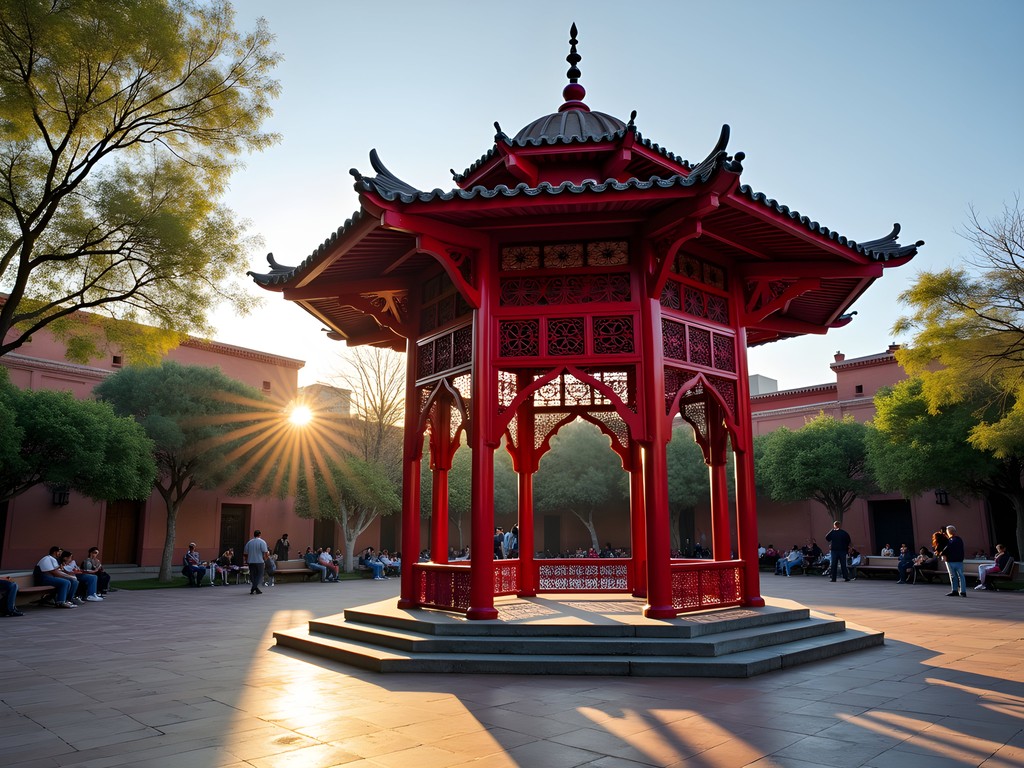
💡 Pro Tips
- Visit the Kiosco Morisco on Sunday mornings when local dance groups practice
- The best alambre tacos in the neighborhood are at the unassuming Taquería Los Paisas on Jaime Torres Bodet street
- Bring a portable power bank as cafés with outlets are limited in this area
Colonia Juárez: The Design District Hiding in Plain Sight
Wedged between tourist-heavy Zona Rosa and the business district, Colonia Juárez feels like Mexico City's answer to Brooklyn's Williamsburg—if Williamsburg still had its edge. This neighborhood exemplifies how CDMX preserves its architectural heritage while embracing forward-thinking design.
Juárez centers around two distinct micro-neighborhoods. First is Zona Rosa, which despite being somewhat touristy, maintains an LGBTQ+-friendly atmosphere worth exploring. But the real magic happens in the adjacent Roma Norte area, specifically around the tree-lined streets of Calle Havre and Calle Dinamarca.
Here, Porfirian-era mansions have been transformed into concept stores and showrooms. My buying trip brought me to Hi-BYE Studio, where designer Roberto Sánchez creates minimalist clothing with unexpected proportions that reference traditional Mexican garments without being literal. If you're into menswear, don't miss Trista—their made-in-Mexico pieces blend Japanese-inspired tailoring with locally-sourced fabrics.
For those who prefer vintage, Void Vintage curates pieces that feel like they belong in a museum. I scored a 1970s embroidered guayabera that's become my go-to for summer market appointments. When shopping fatigue hits, the neighborhood delivers with exceptional coffee shops. My daily ritual became a cortado at Quentin Café, where I'd review my buying notes while people-watching through their massive windows.
Dining in Juárez ranges from street food to fine dining. For a mid-range splurge that's worth every peso, book at Masala y Maíz, where Mexican and South Asian flavors create something entirely new. Their sikil p'ak hummus with pumpkin seeds and habanero oil has ruined regular hummus for me forever.
I navigated the neighborhood with ease thanks to my crossbody bag, which kept my hands free for impromptu market finds while deterring potential pickpockets. When shooting architecture details for my Instagram, my mini tripod proved invaluable for capturing those perfect symmetrical shots of Juárez's art nouveau buildings.
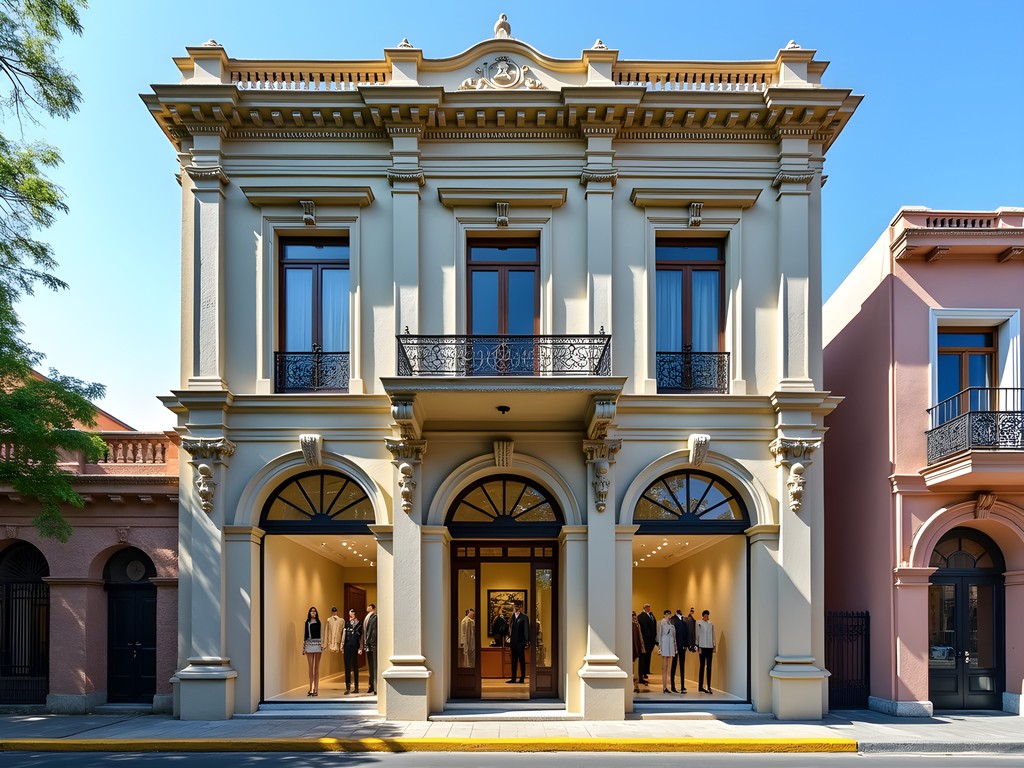
💡 Pro Tips
- Visit on weekdays to catch designers actually working in their studios—many are happy to chat about their process
- The area around Calle Havre has limited ATMs—bring enough cash
- For the best architecture photos, go early morning before cars line the streets
San Rafael: The Artist's Enclave
If you're looking for Mexico City's creative pulse without the scene-y atmosphere that sometimes plagues Roma Norte, San Rafael delivers in spades. This neighborhood flies under most travelers' radar, yet it's where many of the city's working artists, writers, and musicians actually live and create.
What struck me immediately was San Rafael's architectural diversity—Art Deco buildings neighbor colonial-era structures and mid-century apartment blocks, creating a visual timeline of the city's development. The neighborhood was originally built for wealthy families in the late 19th century, but unlike Condesa or Roma, it experienced decades of neglect before its current renaissance.
This history has preserved San Rafael's authenticity. Walking down Calle Sullivan, I discovered Teatro El Galeón, an experimental theater space hosting avant-garde performances that would feel at home in Berlin or Barcelona. Nearby, independent galleries like Galería Hilario Galguera showcase emerging Mexican artists before they hit the international circuit.
My favorite discovery was Expendio de Pulques Finos, a traditional pulquería that's been serving the fermented agave drink since 1915. The space remains virtually unchanged—wooden barrels, simple tables, and zero pretension. I spent an afternoon sampling different curados (flavored pulques) while chatting with a local sculptor about the neighborhood's transformation.
For those seeking retail therapy, San Rafael offers quality over quantity. Taxonomía houses a carefully edited selection of Mexican-made clothing and accessories with an emphasis on sustainable production. Their linen shirts made from Oaxacan cotton became my uniform for dealing with Mexico City's unpredictable fall weather.
When hunger strikes, San Rafael delivers with unpretentious eateries like El Parnita, where the tostadas de atún rival anything in more fashionable districts. For coffee, Buna Café Rico sources directly from Mexican producers and roasts in small batches—their single-origin Chiapas beans were so good I brought three bags home.
Capturing San Rafael's architectural details became my morning ritual, and my compact camera was the perfect companion—discreet enough not to draw attention yet powerful enough to capture the neighborhood's incredible textures and light.
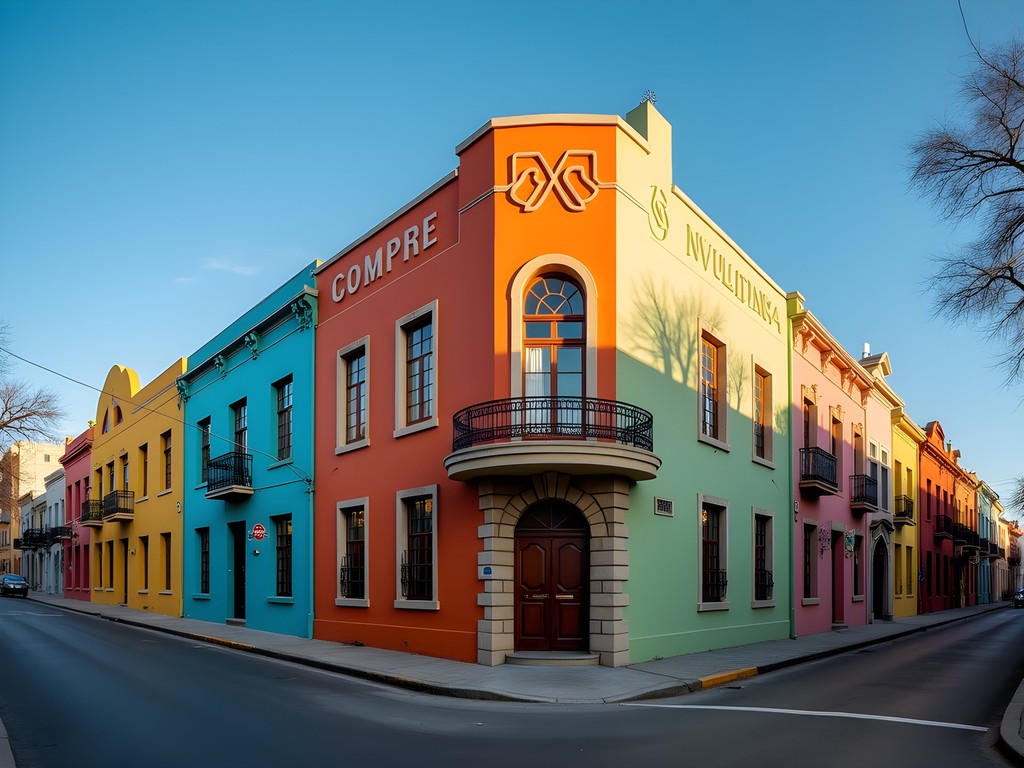
💡 Pro Tips
- Visit on weekends when the Sullivan corridor hosts impromptu art markets
- Many galleries close on Mondays—plan accordingly
- The best street food happens after 7pm around Circuito Interior
Colonia Escandón: The Next Big Thing
Sandwiched between upscale Condesa and working-class Tacubaya, Escandón exists in that perfect moment before full-blown gentrification—authentic enough to feel like a discovery, yet with enough amenities to keep things comfortable. This is where many young creative professionals are setting up shop as they get priced out of Roma and Condesa.
Escandón's main commercial strip, Calle José Martí, embodies this transition. Traditional businesses like the 50-year-old Panadería La Mascota (where I became addicted to their conchas) operate alongside new wave coffee shops like Café Curado, where baristas discuss bean origins with the seriousness of sommeliers.
What makes Escandón special is its residential character. Unlike neighborhoods that feel like open-air malls, people actually live here. Apartment buildings display a fascinating architectural timeline—from Art Deco gems to brutalist experiments from the 1970s. The neighborhood's centerpiece is Parque Morelos, where I spent several mornings watching locals practice tai chi while I planned my day's adventures.
The retail scene in Escandón focuses on sustainability and craftsmanship. Concept store Taxonomía showcases Mexican designers who prioritize ethical production—I discovered Caravana, a brand creating contemporary pieces using traditional textile techniques from Chiapas. Their indigo-dyed jacket would easily retail for $500+ in the States, but here it was priced at a fraction (though still an investment piece).
Food in Escandón ranges from traditional to innovative. For classic Mexican breakfast, Fonda Mayora serves chilaquiles that cured every trace of my mezcal adventures from the night before. On the contemporary side, Lardo (from the same team behind renowned Rosetta) offers Mediterranean-Mexican fusion in a space that would feel at home in Copenhagen.
As I explored Escandón's quiet residential streets, I was grateful for my comfortable walking shoes that kept my feet happy through hours of urban exploration. The neighborhood's mix of sun and shade made me appreciate my polarized sunglasses for reducing glare while still allowing me to appreciate the architectural details that make this area so special.
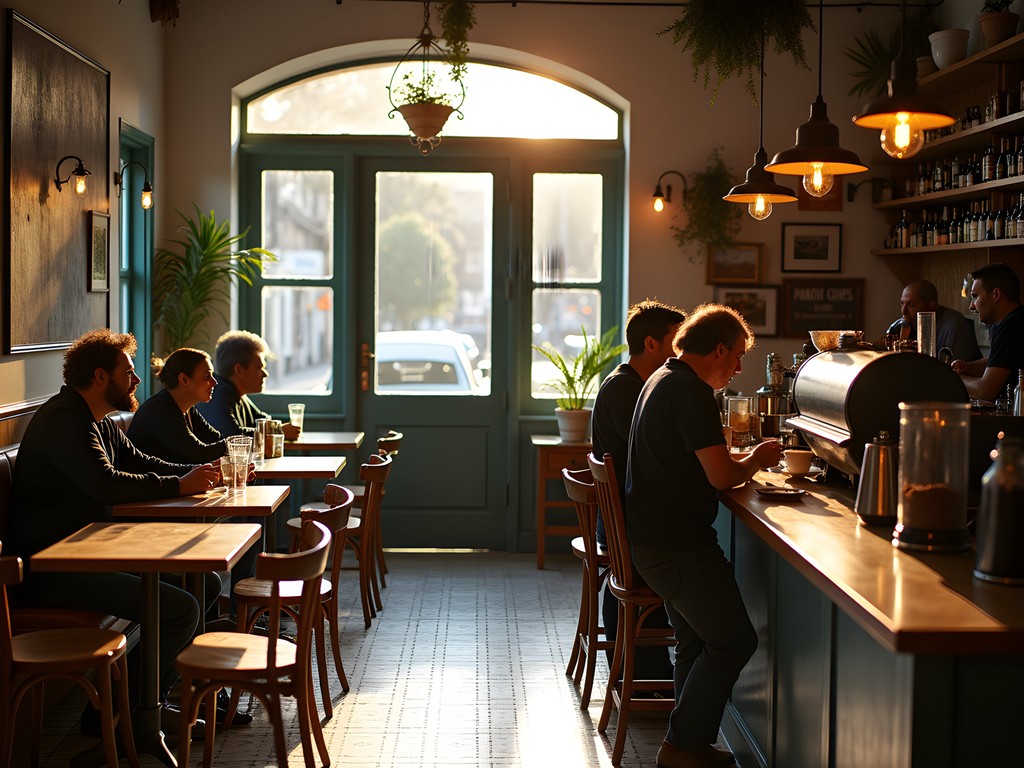
💡 Pro Tips
- Visit Mercado Escandón in the morning for the best selection of produce and incredible breakfast options
- The area has limited hotel options—consider an Airbnb to live like a local
- Calle José Martí is best explored on weekday afternoons when locals are out and about
Narvarte: The Food Lover's Paradise
If you ask a Mexico City local where to find the best tacos, chances are they'll point you to Narvarte. This predominantly residential neighborhood doesn't flaunt its charms—there are no major tourist attractions or architectural showpieces—but what it lacks in obvious appeal, it more than makes up for in culinary excellence and everyday Mexican life.
Narvarte developed in the 1940s and 50s as a middle-class enclave, and that unpretentious character persists today. Low-rise apartment buildings with distinctive mid-century details line quiet streets where families have lived for generations. The neighborhood's commercial heart pulses along Avenida Universidad and Avenida Cumbres de Maltrata, where you'll find everything from hardware stores to some of the city's most celebrated taquerías.
My taco pilgrimage began at the legendary Taquería El Califa de León, where the suadero (thin beef cut) tacos justified every bit of hype. But the real revelation came at Cocuyos, an unassuming street stand where the campechano (mixed meat) tacos had me questioning everything I thought I knew about flavor combinations. Pro tip: their longaniza (spiced pork sausage) is worth the inevitable line.
Beyond tacos, Narvarte delivers with regional Mexican specialties. At Fonda Margarita, I experienced a traditional Mexican breakfast among local office workers and families—their chilaquiles verdes with cecina had me planning a return visit before I'd even paid the bill. For something more contemporary, La Bicla offers innovative small plates highlighting ingredients from across Mexico.
What makes Narvarte special is its complete lack of tourist infrastructure—this is where actual chilangos live, work, and eat. Mercado Narvarte provides a glimpse into everyday Mexican life, with vendors selling everything from fresh produce to household goods. I spent an entire morning wandering its aisles, sampling tropical fruits I'd never encountered before and chatting with vendors about how to prepare nopales properly.
The neighborhood's retail scene focuses on practicality rather than fashion, though vintage hunters should check out Goodbye Folk for curated second-hand pieces with a focus on Mexican designers from the 70s and 80s. I scored a hand-embroidered guayabera that's become a staple in my summer rotation.
Exploring Narvarte's street food scene meant lots of walking and standing, so my insulated water bottle became essential for staying hydrated in Mexico City's dry climate. When sampling street food, I was grateful for my hand sanitizer which kept things hygienic without interrupting my taco marathon.
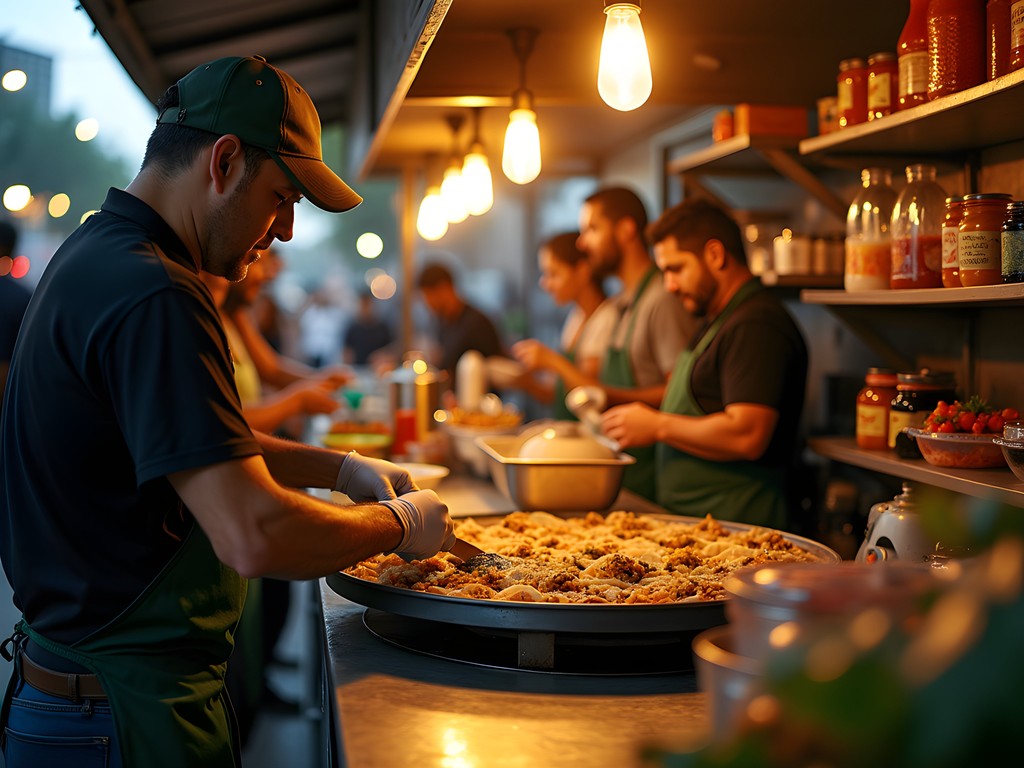
💡 Pro Tips
- Most taquerías in Narvarte hit their stride after 8pm—don't show up for dinner at 6pm
- Bring small bills and coins for street vendors
- The best seafood is at El Pescadito on Avenida Cumbres de Maltrata—get there early as they often sell out
San Miguel Chapultepec: The Quiet Sophisticate
Nestled against the eastern edge of Chapultepec Park, San Miguel Chapultepec offers a masterclass in understated elegance. While tourists flock to neighboring Condesa and Polanco, this leafy enclave remains refreshingly local—a secret hideaway for architects, academics, and creative professionals seeking tranquility without sacrificing style.
What immediately struck me about San Miguel was its verdant character. Massive jacaranda and ahuehuete trees create natural canopies over streets lined with a fascinating mix of architectural styles—from colonial-era homes to mid-century masterpieces by Luis Barragán disciples. The neighborhood's proximity to Mexico's largest urban park means the air feels noticeably fresher, a welcome respite from the city's notorious pollution.
The cultural heart of San Miguel Chapultepec is undoubtedly Galería Kurimanzutto, housed in a converted timber yard where soaring ceilings and industrial elements provide the perfect backdrop for contemporary art. During my visit, a Gabriel Orozco installation transformed the space into an immersive experience that had me returning three times to fully appreciate its nuances.
Coffee culture thrives here with standouts like Café Avellaneda, where baristas treat coffee preparation as a precise science—their pour-over using beans from Veracruz was among the best I've had anywhere in the world. For something stronger, Limantour (consistently ranked among Latin America's best bars) crafts cocktails that showcase Mexican spirits beyond the expected tequila and mezcal.
The shopping scene in San Miguel Chapultepec emphasizes quality over quantity. Concept store Casa Bosques combines a carefully curated bookshop with design objects and chocolate made in their on-site workshop. Their single-origin Mexican chocolate bars make perfect gifts—I brought back a dozen for the merchandising team back home.
For fashion enthusiasts, Cihuah showcases minimalist designs by Mexican designer Vanessa Guckel, whose architectural approach to clothing reflects the neighborhood's aesthetic sensibility. Their pieces transition seamlessly from work meetings to dinner, making them perfect for my buying trips.
Dining in San Miguel Chapultepec ranges from refined to rustic. Restaurante Nicos has been serving traditional Mexican cuisine since 1957, earning its place among the city's culinary institutions—their tableside preparation of guacamole is both delicious and theatrical. For something more contemporary, Lorea offers a tasting menu highlighting Mexican ingredients through a modern lens.
The neighborhood's quiet streets and architectural details were perfect for testing my travel camera, whose discreet size allowed me to capture candid street scenes without disrupting the neighborhood's peaceful character.

💡 Pro Tips
- Visit Chapultepec Park's lesser-known second section directly adjacent to San Miguel for peaceful walking paths
- Many galleries and boutiques close on Mondays—plan accordingly
- The neighborhood is best explored on foot—wear comfortable shoes and bring a light layer as tree-lined streets can be cooler than other parts of the city
Final Thoughts
Mexico City reveals itself layer by layer to those willing to venture beyond the usual tourist circuit. These neighborhoods—each with its distinct character and rhythm—offer a glimpse into the authentic chilango lifestyle that most visitors never experience. What strikes me most about exploring these areas is how they challenge the oversimplified narratives about this complex metropolis. Mexico City isn't just ancient pyramids and colorful folklore; it's a dynamic urban landscape where tradition and innovation dance in constant conversation. Next time you visit, set aside at least a few days to wander these less-traveled colonias. Rent an Airbnb in Escandón instead of a hotel in Polanco. Have breakfast at a local fonda in Narvarte rather than your hotel restaurant. The connections you'll make and the perspectives you'll gain will transform your understanding of not just Mexico City, but how locals in any global city actually live. Until next time—José signing off from Santa Ana, already planning my return to explore even more hidden corners of CDMX.
✨ Key Takeaways
- The most authentic neighborhoods are often adjacent to tourist hotspots—just a few blocks can make all the difference
- Mexico City's neighborhoods are best explored through their food scenes, where local culture is most accessible
- Fall is the ideal time to explore CDMX's outdoor spaces and tree-lined neighborhoods
📋 Practical Information
Best Time to Visit
October-November (fall)
Budget Estimate
$75-150 USD per day excluding accommodation
Recommended Duration
At least 2 weeks to explore beyond tourist areas
Difficulty Level
Moderate (Language Barrier In Non-Tourist Areas)
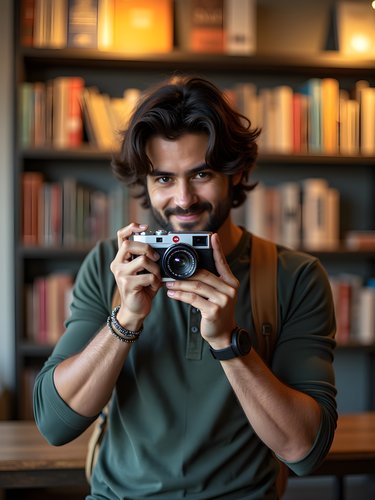
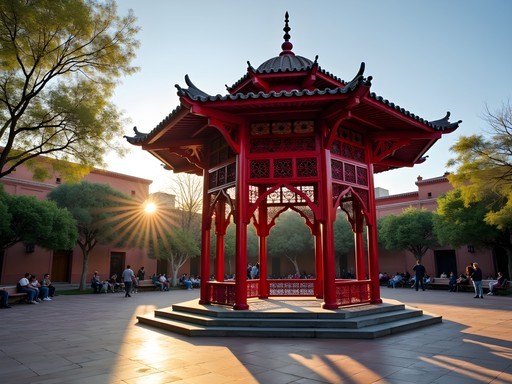

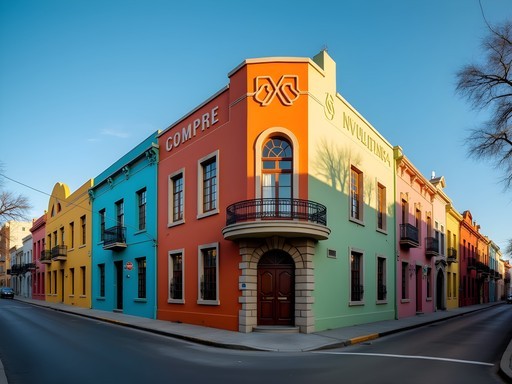

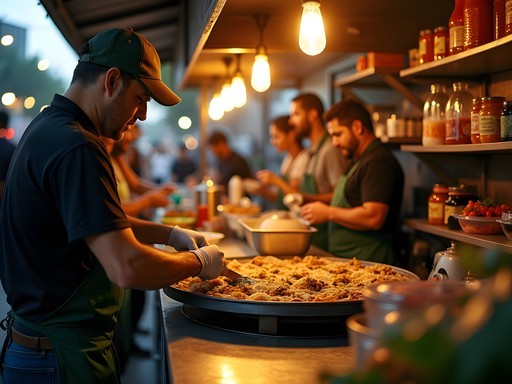
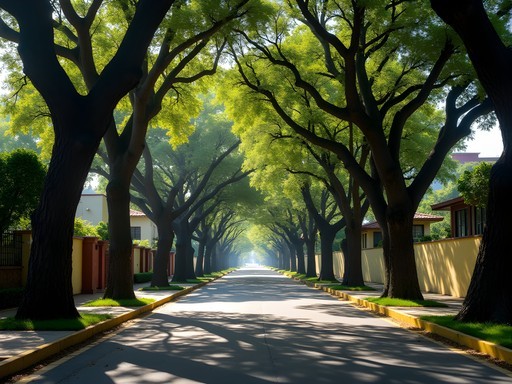


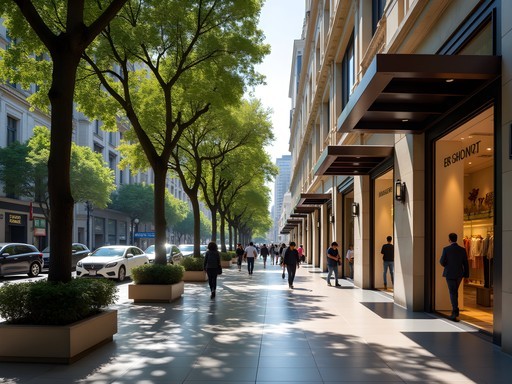
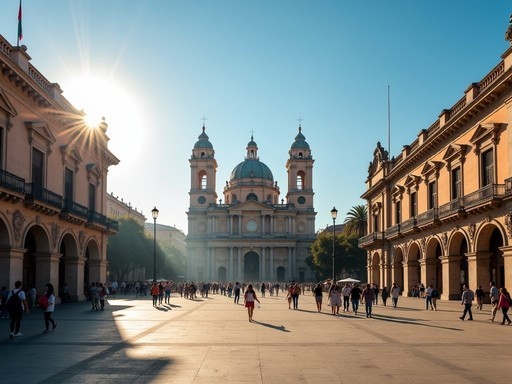
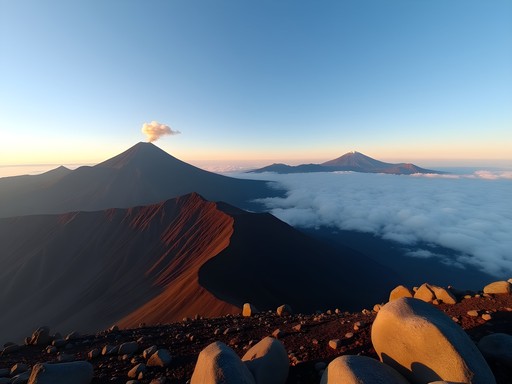
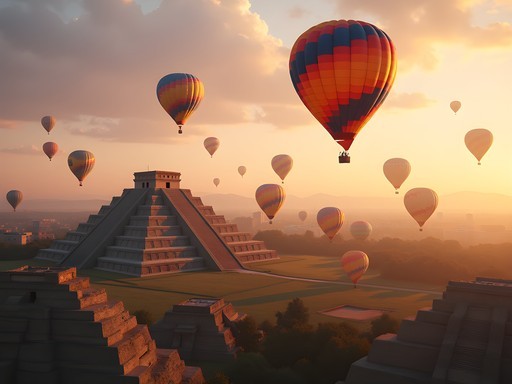
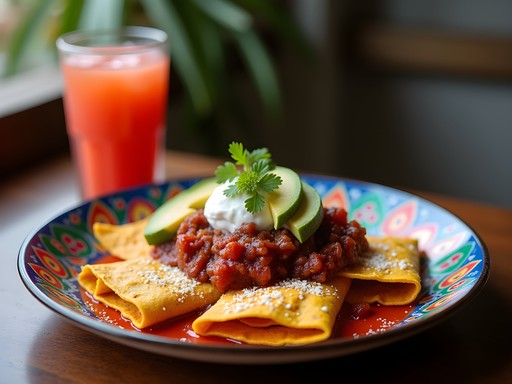
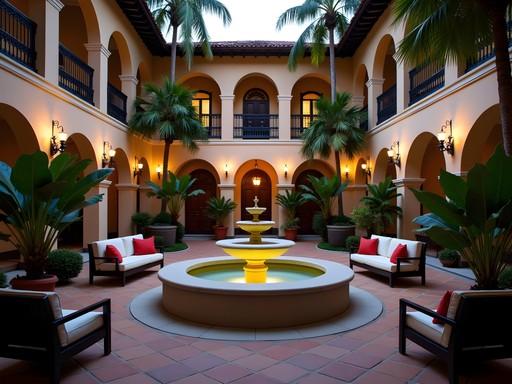
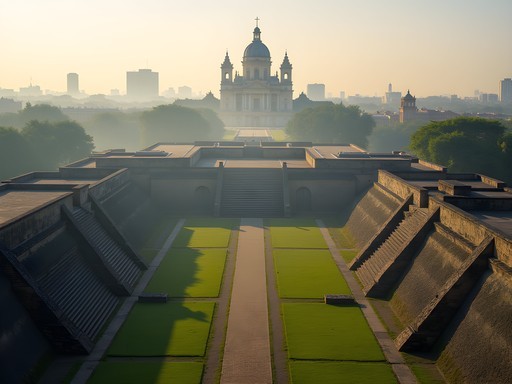

Comments
photophotographer
Heading to CDMX next month and definitely want to check out Colonia Juárez. Is it safe to walk around there at night? And any specific spots for good street food in that area?
Jose McDonald
Colonia Juárez is generally safe, especially around Calle Havre and the Milano area. For street food, don't miss the tlacoyos stand on the corner of Versalles and Londres - the blue corn ones with requeson are incredible. Open until about 6pm though, not a night spot. For evening eats, Taquería El Califa (the original one) stays open late and is well-lit and busy.
photophotographer
Thanks Jose! Adding these to my list!
Frank Garcia
Great post Jose! I spent a month in CDMX last year and San Rafael was my absolute favorite discovery. There's this tiny mezcalería called Tlacuache hidden behind a bookshop that almost no tourists know about. The owner can tell you stories about each mezcal's origin for hours. I'd add Colonia Narvarte to this list too - it's where all the chilangos go for the best tacos in the city. Zero English spoken there which is exactly what makes it special. Taquería El Califa de León on Cumbres de Maltrata is life-changing. One safety tip for anyone heading to these neighborhoods - I used the money belt and felt totally secure even on crowded metros. Just be street smart like in any big city!
photophotographer
Tlacuache is amazing! Did you try the cupreata they have from Guerrero?
Frank Garcia
Yes! That smoky cupreata was incredible. The owner let me try a special batch he keeps under the counter too. Did you get that far? 😁
wavetime
Just got back from CDMX and wish I'd seen this earlier! We did check out Santa María la Ribera though and that kiosk is even more beautiful in person. The little coffee shop across from it (can't remember the name) had the best pan dulce I've ever tasted. Did anyone try the pulque bars in that area? We were too nervous to try it lol
Frank Garcia
The pulque bars in Santa María are actually super authentic! El Templo de Diana is my go-to. The taste is... unique... but after the second glass you'll either love it or still hate it 😂 Worth trying once though!
wavetime
Ahh wish I'd been braver now! Adding it to the list for next time. Thanks Frank!
firsttime_cdmx
Are these areas safe at night? Planning my first trip and want to experience local life but also be smart.
mexicocitylover
Most are totally fine! Just use Uber at night instead of walking alone, especially in San Rafael. Colonia Juárez and Santa María la Ribera have plenty of people out in the evenings.
hikingblogger
Just wanted to add that Colonia Juárez has some AMAZING coffee shops. We stumbled across Café Avellaneda and it was probably the best coffee I've had in my life. The barista spent like 10 minutes making my pour-over and explaining the whole process (in Spanish and broken English). Really cool experience!
Nicole Russell
Thanks for this tip! I'm a huge coffee nerd so this is going on my must-visit list.
happyone
We did the public transportation like you suggested. Super easy and cheap!
Douglas Bradley
The metro is seriously underrated. Clean, efficient, and you can get almost anywhere for pennies. Just avoid rush hour if possible!
Lillian Diaz
Just returned from a month in CDMX and can confirm Colonia Escandón is definitely having a moment right now! The food scene is incredible - try Lardo for breakfast (get there early) and Eno for amazing sourdough. One neighborhood I'd add to this list is Narvarte. It feels completely local, has some of the best taquerias in the city (Los Cocuyos and El Califa de León are my favorites), and you'll rarely hear English spoken. Perfect for those who want to practice Spanish and eat where the locals eat. Jose - this is such a thoughtful guide that respects the city while still inviting travelers to explore. Gracias por compartir!
islandlover9134
Narvarte sounds amazing! How's the public transportation access there?
Lillian Diaz
Really good! Metro Eugenia and Metro Etiopía both serve the area, and there are plenty of buses. I found it super easy to get around from there.
greenway
OMG YES!!! I spent a month in Mexico City last year and Santa María la Ribera was my absolute FAVORITE neighborhood! The Kiosco Morisco is so beautiful at sunset and there's this amazing ice cream shop nearby called Nevería Roxy that's been there since forever! The locals were so friendly and I felt like I was experiencing the real Mexico City, not just the Instagram version. Can't wait to go back and explore some of these other neighborhoods!!
waveblogger
Thanks for the Nevería Roxy tip! Adding it to my list for next month's trip.
winterblogger
Love this! The touristy areas were so crowded when we visited.
Sage Dixon
Jose, you nailed it with this list! I've been living in CDMX part-time for the past two years, and Colonia Juárez has become my second home. The contrast between the Porfiriano architecture and those modern design shops and cafes is what makes Mexico City so special. For anyone heading to San Rafael, don't miss the weekend tianguis (street market) - it's where I've found everything from vintage vinyl to handcrafted mezcal cups. And if you're there on a Sunday, the small pulquería on the corner of Sabino and Altamirano serves some of the best curados (flavored pulque) in the city. The guava one is my go-to after a long day of exploring! Great post that really captures the soul of these neighborhoods.
Venture X
Premium card with 2X miles, $300 travel credit, Priority Pass